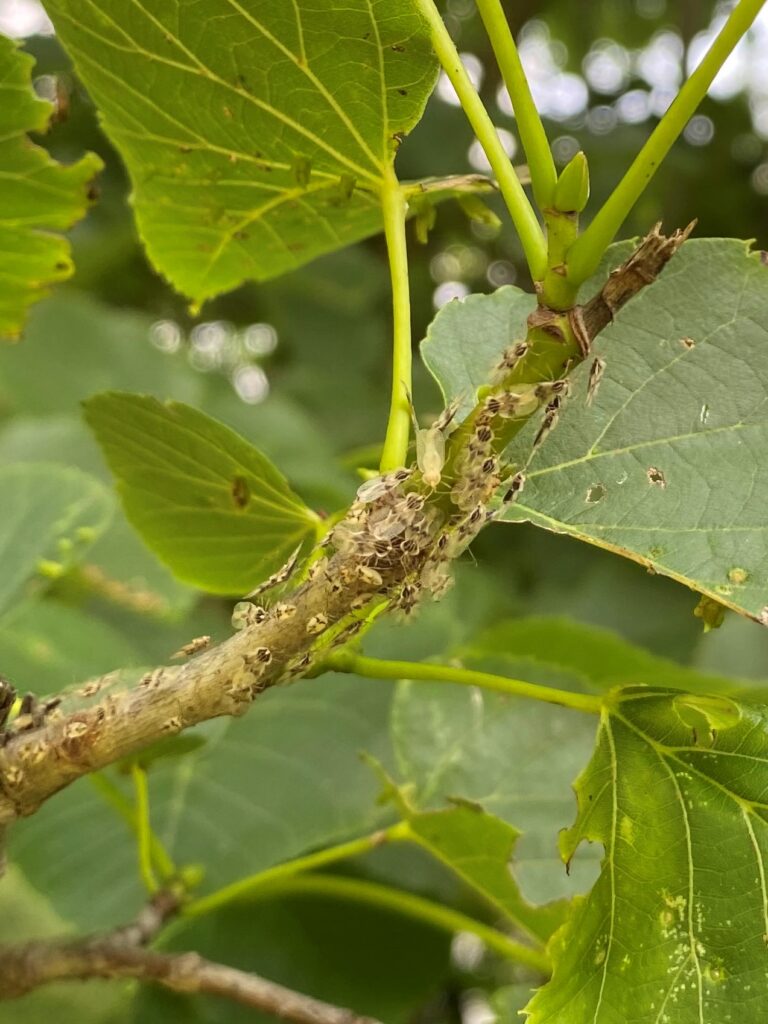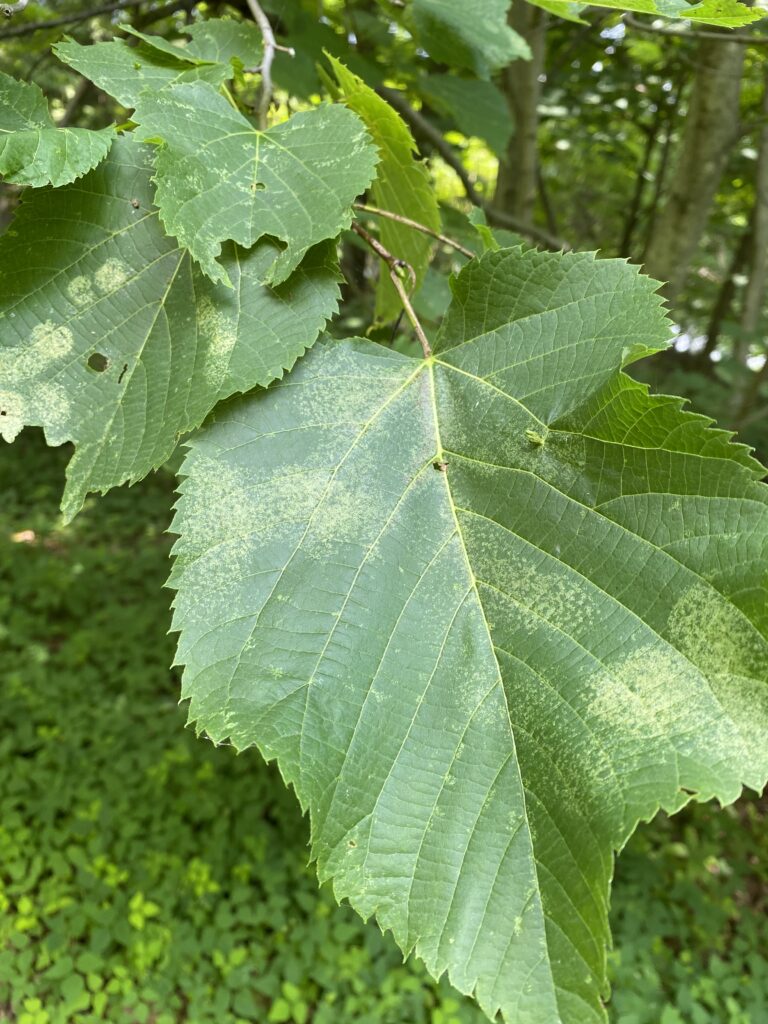By Linda Williams, DNR Forest Health Specialist, Woodruff, Linda.Williams@wisconsin.gov or 920-360-0665
Lacebugs are tiny, delicate-looking insects that can cause leaves to turn a little off-color. They are typically found feeding on the undersides of leaves, where they insert their mouthparts and suck the sap from the leaves. From the top of the leaves, these areas where the feeding damage occurs are stippled with small white or yellow specks, often in a generally circular pattern. Recently congregations of adult and nymph lacebugs were noted on the twigs of basswood, but it was unclear if they were feeding on the twigs or just resting there.

Lacebug adults and nymphs have congregated on this basswood twig.
Adult lacebugs spend the winter protected in bark cracks and crevices. There are many species of lacebugs, but the most common ones affecting our forests are basswood lacebugs and cherry lacebugs.
If the damage on your trees is noticeable from the tops of the leaves, then pesticides are not recommended because the damage is already done. If the leaves are completely off-color, or drop from the tree prematurely then monitor those trees next year to see if the lacebugs return and treat the trees early before damage occurs.

Lacebug damage shows up on the top of leaves as light-colored circular areas where the insects feed on the underside of the leaves.
